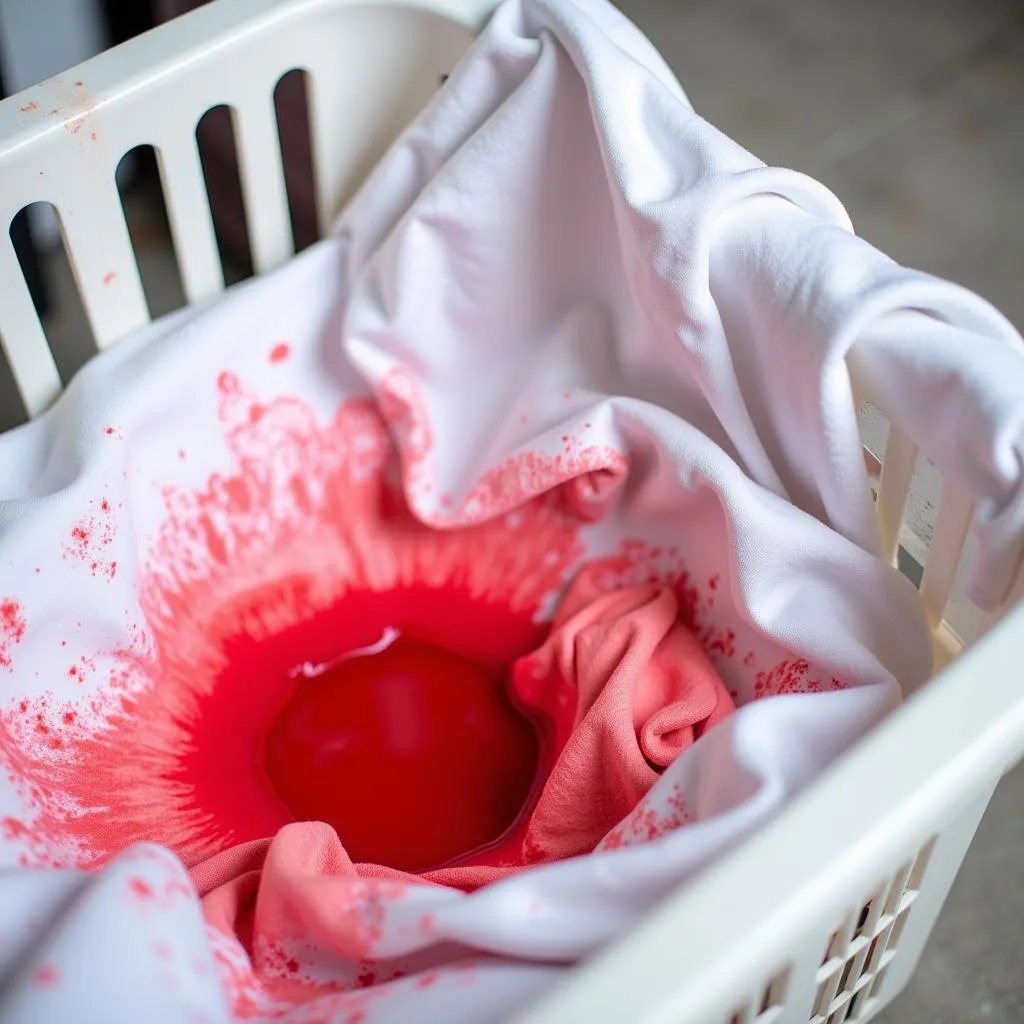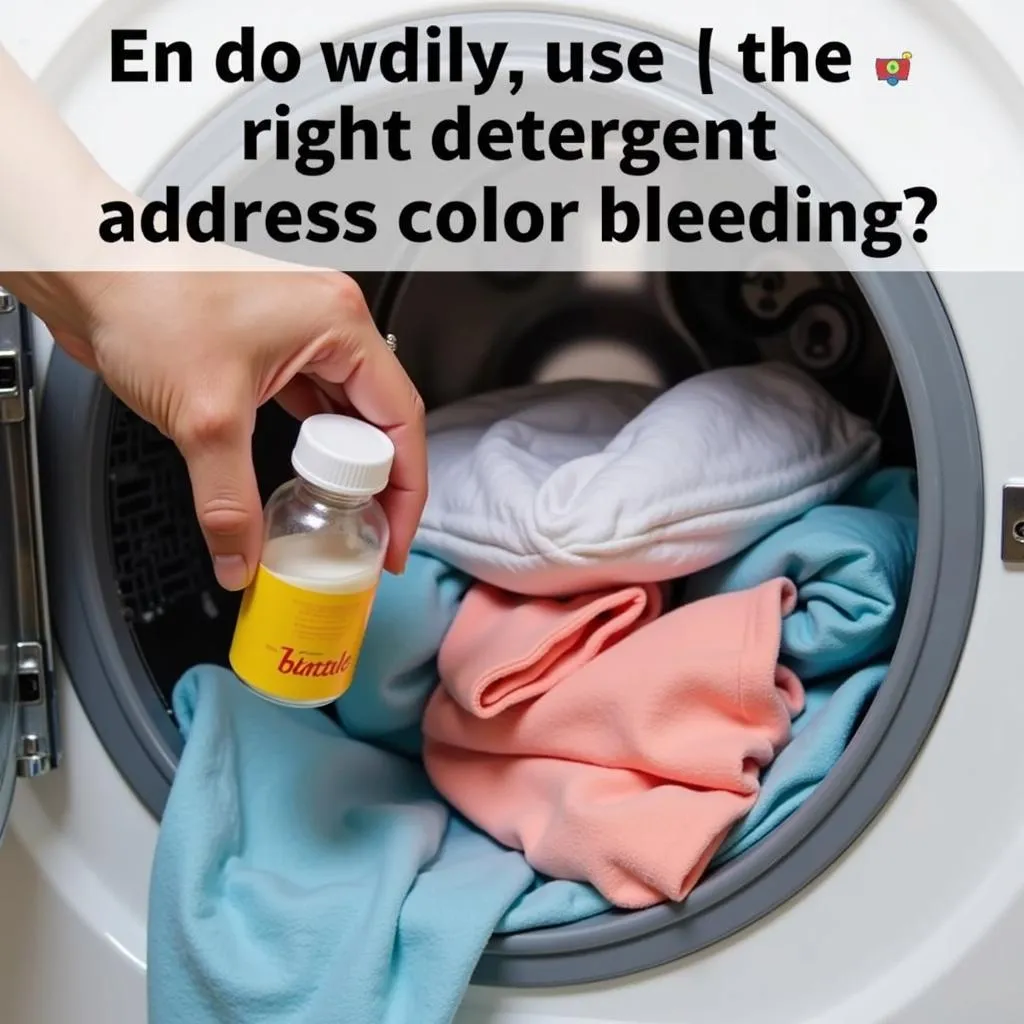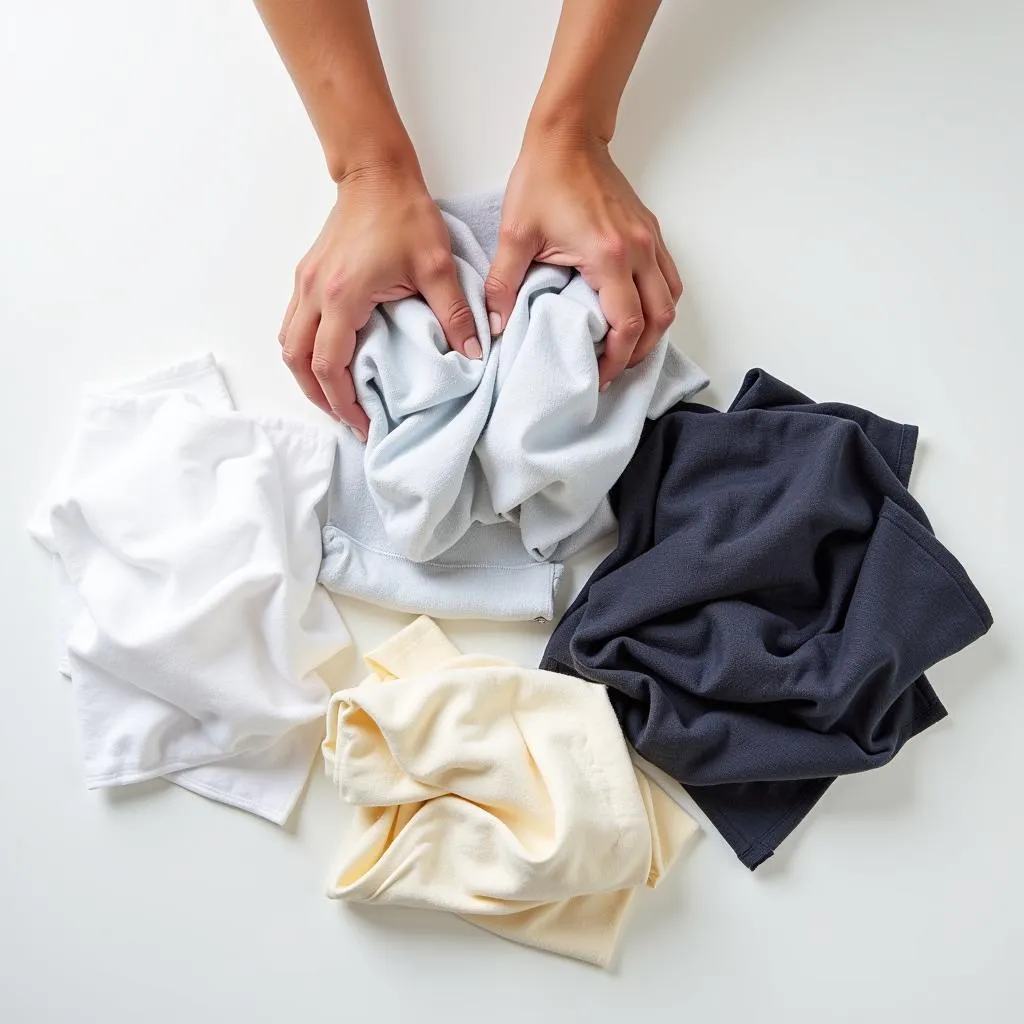Discovering a color bleed in your freshly laundered clothes can be incredibly frustrating. That moment of panic when you realize your favorite white shirt now has a pink hue is all too familiar for many. But before you despair, know that fixing a color bleed is often possible with the right approach and a little bit of laundry know-how.
 Laundry with color bleeding
Laundry with color bleeding
Understanding the Enemy: What Causes Color Bleeding?
Color bleeding occurs when unstable dye molecules in a garment release and transfer to other fabrics during the wash cycle. This is most common with new clothes, especially brightly colored items or those dyed with natural dyes. Certain fabrics, like cotton and linen, are also more prone to bleeding than synthetics.
Several factors can trigger or worsen color bleeding:
- Hot Water: High temperatures can cause dye molecules to break down and release.
- Overloading the Washing Machine: Cramming too many clothes limits water circulation, preventing proper rinsing and increasing the chances of dye transfer.
- Incorrect Detergent: Using detergents without color-safe formulas can strip fabrics of their color, leading to bleeding.
The Rescue Mission: How to Fix a Color Bleed
The sooner you address a color bleed, the higher the chances of success. Here’s a step-by-step guide to help salvage your garments:
- Don’t Let it Set: Avoid drying the affected clothes. Heat will set the stain, making it much harder, if not impossible, to remove.
- Separate and Re-wash: Immediately separate the discolored items from the rest of the laundry. Re-wash the affected clothes with a color-safe detergent using the coldest water setting on your machine. This can often remove fresh dye transfer.
 Re-washing clothes with color-safe detergent
Re-washing clothes with color-safe detergent
-
Call in the Reinforcements: If re-washing alone doesn’t do the trick, it’s time for some extra help. Several household products can be surprisingly effective at removing color bleeds:
- White Vinegar: Soak the stained garments in a solution of equal parts white vinegar and cold water for 30 minutes to an hour. Vinegar helps neutralize the dye and loosen its hold on the fabric.
- Oxygen-Based Bleach: This gentler alternative to chlorine bleach is effective at removing color bleeds, especially on white clothes. Follow product instructions for the best results.
- Color Remover Products: Several commercial products are specifically designed to remove color bleeds. Look for color remover sheets or powders at your local grocery store or online.
-
Repeat as Needed: For stubborn stains, you might need to repeat the soaking and washing process multiple times.
-
Air Dry: Once you’re satisfied with the color removal, air dry the garments away from direct sunlight.
Preventing Future Color Catastrophes
Prevention is always better than cure. Here’s how to minimize the risk of future color bleeds:
- Sort Religiously: Separate your laundry into whites, lights, and darks. Wash new clothes, especially brightly colored ones, separately for the first few washes.
- Cold is King: Opt for cold water washes whenever possible. Cold water is gentler on fabrics and minimizes dye bleeding.
- Detergent Matters: Use a detergent specifically formulated for colored clothes. These detergents help preserve color and prevent bleeding.
- Test for Colorfastness: Before washing a new garment for the first time, test its colorfastness by dampening a small, inconspicuous area with a white cloth. If any color transfers to the cloth, the garment is likely to bleed and should be washed separately.
 Sorting laundry into different piles
Sorting laundry into different piles
Seeking Professional Help
If you’ve tried all the DIY methods and the color bleed persists, consider taking the garment to a professional cleaner. They have access to stronger cleaning agents and techniques that might be able to salvage your clothes.
Remember, while preventing color bleeds entirely is not always possible, following these tips can dramatically reduce the risk and save you from laundry day disasters. And if a color bleed does happen, don’t panic! With prompt action and a little bit of effort, you can often restore your garments to their former glory.
FAQ
Can I use chlorine bleach to fix a color bleed?
Chlorine bleach can further fade and damage colored clothes. It’s best to avoid using it on anything other than white fabrics.
Is it safe to wash color-bleeding clothes with other clothes again?
Once you’ve successfully removed the color bleed, it’s generally safe to wash the garment with similar colors again. However, it’s a good idea to observe its behavior for the first few washes to ensure the bleeding issue has been resolved.
What if I accidentally dried a color-bled garment?
If the color bleed is minor, you might still be able to salvage the garment using the methods described above. However, if the stain has set due to the heat, it will be much more difficult, and professional cleaning might be your only option.
Are there any fabrics more prone to color bleeding than others?
Natural fibers like cotton and linen tend to bleed more than synthetics. Additionally, brightly colored garments, especially reds, blues, and greens, are more susceptible to bleeding.
How can I prevent new clothes from bleeding?
Washing new clothes separately for the first few washes, using cold water, and choosing a color-safe detergent are effective ways to minimize color bleeding.
Need further assistance with a particularly stubborn color bleed? Don’t hesitate to contact Color Box Hanoi! Our team of color experts is always here to help. Reach us at Phone Number: 0373298888, Email: [email protected] or visit us at 86 Cầu Giấy, Hà Nội. We offer 24/7 customer support to address all your color-related queries.
